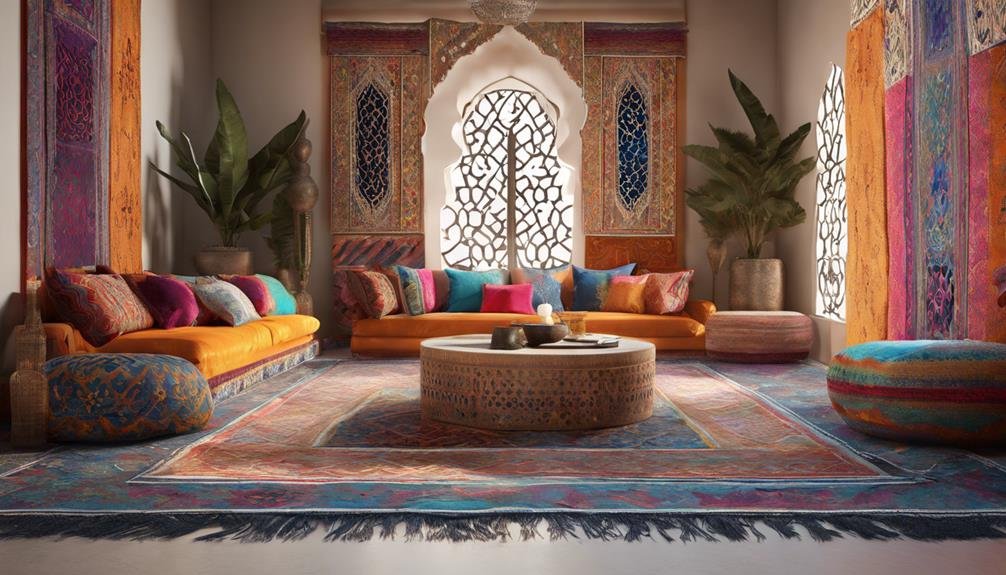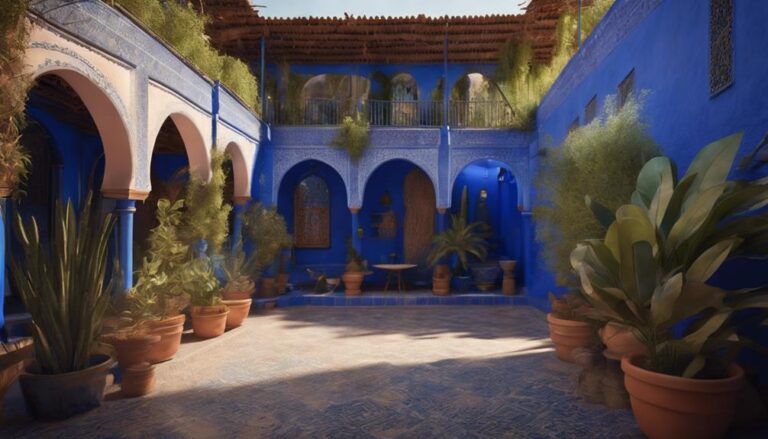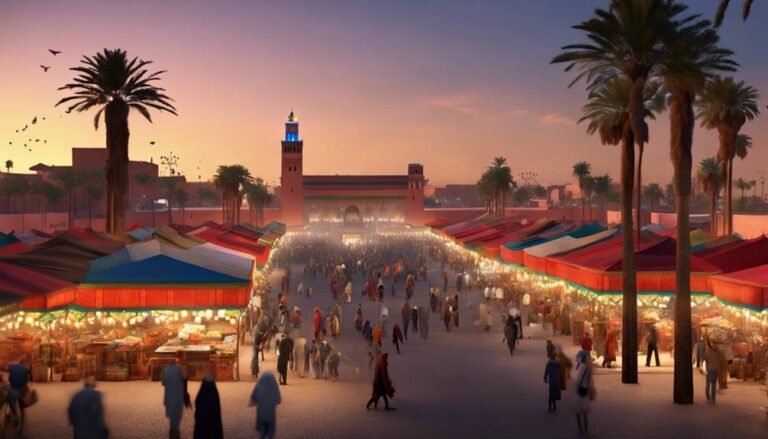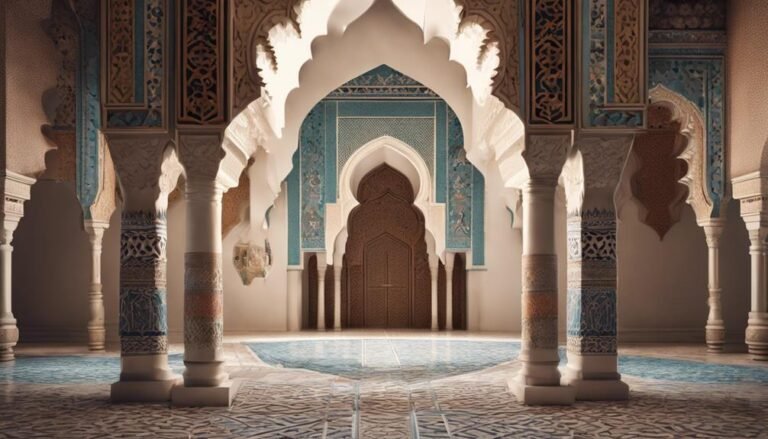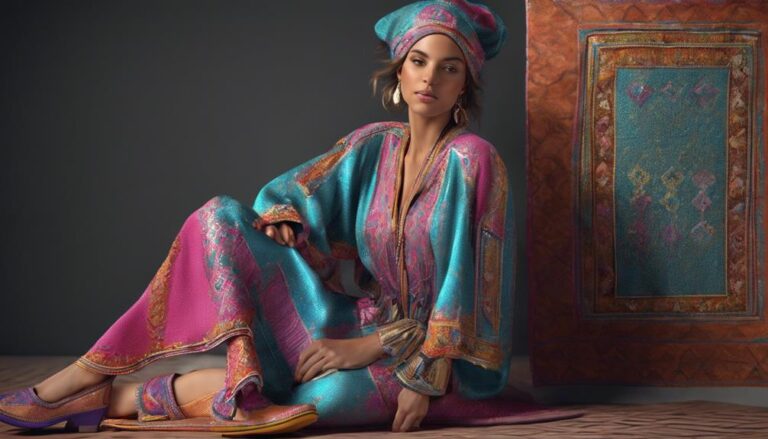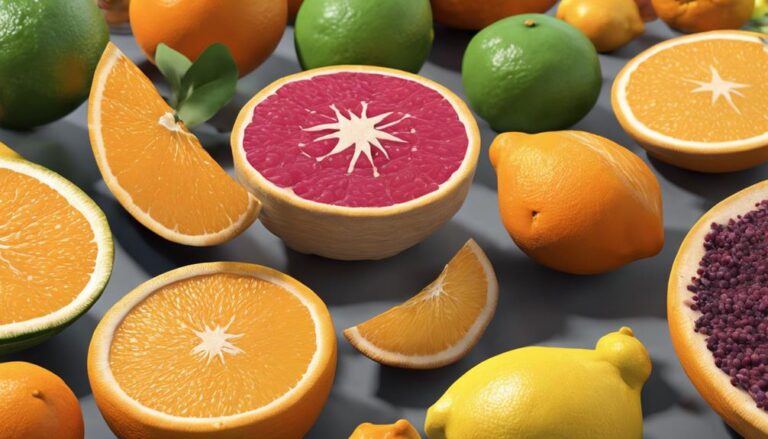Step into the world of Moroccan fabrics where centuries of cultural influences, artisanal craftsmanship, and vibrant designs intertwine. Berber, Arab, and European traditions have shaped Moroccan textiles, showcasing intricate weaving techniques and a rich color palette. Hand-loomed fabrics with symbolic motifs like geometric shapes and floral patterns reflect a blend of heritage and artistry. Moroccan silk, cotton, and wool fabrics hold significance for their luxurious feel, durability, and traditional motifs. Explore how these fabrics continue to preserve cultural identity and inspire modern designs with a harmonious blend of tradition and innovation.
Key Takeaways
- Moroccan fabrics encompass silk, cotton, and wool textiles.
- Rich colors, intricate patterns, and symbolic motifs define Moroccan textiles.
- Traditional weaving techniques passed down through generations.
- Reflect diverse cultural influences, from Berber to European.
- Artisan craftsmanship crucial for preserving heritage and cultural identity.
History of Moroccan Textiles
In exploring the origins of Moroccan textiles, one must uncover the rich tapestry of cultural influences that have shaped this vibrant and intricate art form over the centuries. The textile evolution in Morocco is a reflection of the cultural impact that various civilizations, such as the Berbers, Arabs, and Europeans, have had on the creation of these fabrics. From the historical roots of Moroccan textiles, it's evident that artisan craftsmanship played a crucial role in shaping the unique designs and techniques that are still celebrated today.
The history of Moroccan textiles dates back centuries, with each region of the country displaying its own distinct weaving traditions and patterns. The intricate designs and vibrant colors seen in Moroccan fabrics are a testament to the diverse cultural influences that have shaped the art form over time. Artisans in Morocco have passed down their weaving techniques from generation to generation, preserving the rich heritage of this craft. The historical significance of Moroccan textiles goes beyond mere fabrics; it represents a fusion of artistic expression and cultural identity that continues to captivate admirers worldwide.
Traditional Moroccan Weaving Techniques
Centuries-old Traditional Moroccan Weaving Techniques intricately intertwine cultural heritage with artistic craftsmanship, showcasing a tapestry of skills passed down through generations. These traditional techniques are a proof of ancient craftsmanship, where weavers meticulously work on looms, creating intricate patterns and designs that reflect Morocco's rich history and cultural diversity.
The traditional Moroccan weaving techniques involve hand-looming, a method that demands precision and patience. Artisans carefully select vibrant threads, often dyed using natural pigments like saffron or indigo, to weave stunning textiles. Patterns like geometric shapes, floral motifs, and symbolic designs are common in Moroccan fabrics, each holding deep meaning and representing different regions or tribes.
While preserving these age-old methods, modern interpretations have also emerged. Contemporary weavers are incorporating traditional techniques into modern trends, blending heritage with innovation. This fusion results in unique pieces that honor Morocco's weaving heritage while appealing to modern tastes. The marriage of traditional craftsmanship with modern interpretations ensures that Moroccan fabrics remain relevant and cherished both locally and globally.
Types of Moroccan Fabrics
Crafted with meticulous attention to detail and rich cultural significance, Moroccan fabrics encompass a diverse array of textile traditions that reflect the country's vibrant heritage.
The types of Moroccan fabrics are a testament to the country's long history of fabric production and its influence on textile industry trends. One of the most renowned fabrics is the vibrant and intricate Moroccan silk, known for its luxurious feel and stunning designs. This fabric is often used for special occasions and traditional ceremonies, showcasing the skill and artistry of Moroccan weavers.
Additionally, Moroccan cotton fabrics are highly sought after for their durability and breathability. These fabrics are commonly used in everyday clothing, providing comfort and style to the wearer. Another popular type is the wool fabric, which isn't only warm and cozy but also showcases the traditional motifs and patterns that are characteristic of Moroccan textiles.
Through these various fabric types, Morocco continues to make a mark in the global textile industry, blending traditional techniques with modern trends to create unique and timeless pieces.
Significance of Moroccan Textiles
Moroccan textiles reveal immense significance in the world of cultural heritage, showcasing a rich tapestry of history and tradition.
The artistic techniques employed in creating these fabrics are a proof of the skill and creativity of Moroccan artisans throughout the ages.
Exploring the importance of Moroccan textiles exposes a deep-rooted connection to the country's vibrant past and its enduring influence on contemporary design.
Cultural Heritage
Embedded within the vibrant tapestry of Moroccan culture are the intricate textiles that have woven their way into the very fabric of the nation's history and identity. Textile preservation plays an essential role in maintaining Morocco's rich cultural heritage, with traditional weaving techniques being passed down through generations.
These fabrics aren't just beautiful adornments but representations of the country's cultural identity. Additionally, the economic impact of Moroccan textiles can't be overlooked, with the industry providing livelihoods for many locals.
Embracing sustainable practices in textile production not only guarantees the preservation of the environment but also safeguards the authenticity of these age-old crafts for future generations to cherish. The fusion of tradition, artistry, and sustainability in Moroccan textiles epitomizes the essence of the nation's cultural heritage.
Artistic Techniques
In the intricate world of Moroccan textiles, the artistic techniques employed hold profound significance, weaving together centuries of cultural heritage and creativity.
Moroccan fabrics are rich in textile symbolism, with patterns and designs often reflecting aspects of daily life, spirituality, and traditions. The intricate weaving methods, such as the use of traditional looms and hand-dyeing processes, contribute to the unique textures and vibrant colors seen in Moroccan textiles.
These techniques have been passed down through generations, preserving the authenticity of the craft. Today, modern interpretations of Moroccan fabrics blend traditional techniques with contemporary styles, creating a fusion of old and new that continues to captivate audiences worldwide.
The artistry behind Moroccan textiles serves as a testament to the country's artistic prowess and cultural depth.
Colors and Patterns in Moroccan Fabrics
Moroccan fabrics showcase a vibrant color palette that reflects the rich cultural tapestry of the region. The intricate geometric designs found in these textiles are a testament to the skilled craftsmanship and attention to detail prevalent in Moroccan weaving traditions.
Symbolic motifs woven into the fabrics carry deep historical significance, adding layers of meaning to the intricate artistry of Moroccan textiles.
Vibrant Color Palette
Rich with a kaleidoscope of hues and intricate designs, Moroccan fabrics showcase a vibrant color palette that reflects the country's rich cultural heritage and artistic traditions. In Morocco, colors hold deep symbolism; for example, blue is often associated with protection, while green symbolizes hope and joy.
These symbolic meanings are interwoven into the fabrics through a combination of dyes and weaving techniques that have been passed down through generations. The Moroccan textile industry has a long history dating back centuries, with artisans using natural dyes sourced from local plants and minerals to create stunning color combinations.
This tradition hasn't only shaped the vibrant color palette of Moroccan fabrics but also contributed to the country's reputation for producing some of the most visually enchanting textiles in the world.
Intricate Geometric Designs
With a legacy steeped in cultural significance and artisanal craftsmanship, the intricate geometric designs found in Moroccan fabrics captivate with their mesmerizing blend of colors and patterns. These patterns hold deep cultural significance, reflecting the rich history and heritage of Morocco. The geometric motifs are meticulously woven into the fabric, showcasing the skill and precision of Moroccan artisans. The colors used in these designs are vibrant and symbolic, often representing elements like nature, spirituality, and everyday life. The patterns themselves are a visual feast, with intricate shapes and lines coming together to form mesmerizing tessellations that tell stories of tradition and artistry.
- Intricate geometric patterns symbolizing unity and harmony
- Vibrant colors representing different aspects of Moroccan life
- Precise lines and shapes showcasing artisanal expertise
- Cultural significance woven into every design
- Mesmerizing tessellations telling stories of tradition
Symbolic Motifs in Weaving
Delving into the intricate artistry of Moroccan fabrics reveals a world where colors and patterns intertwine to convey profound symbolic motifs in weaving. Moroccan textiles are rich in cultural significance, with each color and pattern telling a story or representing a specific meaning. The intricate designs found in Moroccan fabrics often reflect the country's diverse history and deep-rooted traditions. Let's take a closer look at some common symbolic motifs and their cultural significance in Moroccan weaving:
| Symbolic Motif | Description | Cultural Significance |
|---|---|---|
| Hand of Fatima | Depiction of an open right hand | Protection against evil eye and symbol of femininity |
| Star Shape | Representation of the Star of David or Solomon's Seal | Symbol of protection and connection to spirituality |
| Diamond Pattern | Geometric design symbolizing fertility and prosperity | Reflects abundance and good fortune |
Influences on Moroccan Textile Design
Influenced by a rich tapestry of historical, cultural, and geographical factors, Moroccan textile design showcases a unique blend of tradition and innovation. This fusion of influences has shaped the vibrant and intricate patterns seen in Moroccan fabrics.
Here are some key influences on Moroccan textile design:
- Global Influences: Moroccan textile design has been influenced by various global cultures such as Arab, Berber, Sub-Saharan African, and European, resulting in a diverse range of motifs and techniques.
- Historical Legacy: Centuries of weaving traditions, including techniques passed down through generations, have contributed to the distinctive style of Moroccan textiles.
- Geographical Diversity: The diverse landscapes of Morocco, from the Atlas Mountains to the Sahara Desert, have inspired unique color palettes and patterns in textile design.
- Cultural Significance: Symbolism and cultural traditions play a significant role in Moroccan textile design, with motifs often reflecting aspects of daily life, beliefs, and history.
- Modern Interpretations: Contemporary designers are reinterpreting traditional Moroccan textile designs, blending them with modern aesthetics to create innovative and stylish fabrics.
Contemporary Use of Moroccan Fabrics
Considering the evolution of fashion and interior design trends, Moroccan fabrics have found a prominent place in contemporary settings, reflecting a harmonious blend of tradition and modernity. In modern applications, Moroccan textiles are being used in innovative ways, not only in traditional Moroccan-inspired spaces but also in a wide range of global trends and fusion styles.
Contemporary designers have been incorporating Moroccan fabrics into their collections, creating unique and eclectic pieces that showcase the rich heritage of Moroccan textile design while adding a fresh and contemporary twist.
The intricate patterns and vibrant colors of Moroccan fabrics have become popular choices for upholstery, drapery, cushions, and even clothing items in contemporary designs. The versatility of these fabrics allows them to seamlessly fit into various decor styles, from bohemian chic to modern minimalist interiors. The fusion of Moroccan textiles with modern design elements has resulted in stunning creations that appeal to a wide audience looking for a blend of cultural heritage and contemporary aesthetics.
Conclusion
As you immerse yourself in the world of Moroccan fabrics, you'll uncover a tapestry of history, culture, and artistry woven into every thread.
Like a vibrant mosaic of colors and patterns, these textiles tell a story that transcends time and place.
From traditional weaving techniques to contemporary design influences, Moroccan fabrics offer a window into a rich and diverse heritage that continues to inspire creativity and admiration around the globe.
Explore the beauty and craftsmanship of Moroccan textiles, and let their allure captivate your senses.

The Editorial Team is a passionate group of Morocco enthusiasts dedicated to sharing the beauty, culture, and wonders of this captivating country. With diverse backgrounds and a deep love for travel, we strive to bring you engaging and informative content that inspires your Moroccan adventures. From uncovering hidden gems and sharing local insights to exploring mouthwatering cuisine and showcasing the vibrant lifestyle, our team is committed to providing you with valuable resources and exciting stories that enhance your exploration of Morocco. Join us on this journey as we celebrate the rich heritage and unforgettable experiences that make Morocco truly special.

